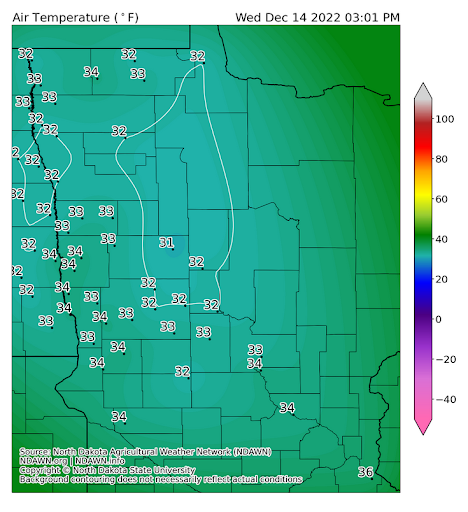Restrictions with Dicamba in 2024
- Dicamba is an important tool in combating herbicide resistant weeds in Dicamba Tolerant (DT) soybeans. Products containing dicamba can cause serious damage to non-dicamba-tolerant soybeans and to other sensitive crops and non-crop plants.
- During the 2023 growing season, when Minnesota specific restrictions were in effect, the MDA received 15 dicamba drift related reports, compared to 304 reports in 2021, when such restrictions were not in place.
- The MDA wishes to preserve this tool for farmers. However, it must be used without impacts on neighboring crops, homes, farms, and gardens.
- Dicamba is a Restricted Use Pesticide (RUP) that can only be applied by applicators that are licensed or certified to apply RUPs in Minnesota.
- For the 2024 growing season, in Minnesota, the following restrictions apply to the three dicamba products, XtendiMax, Engenia, and Tavium
- Cutoff date: Do not apply south of interstate 94 after June 12. Do not apply north of interstate 94 after June 30.
- Cutoff Temperature for the entire state: Do not apply if the air temperature of the field at the time of application is over 85 degrees Fahrenheit or the National Weather Service’s forecasted high temperature for the nearest available location for the day exceeds 85 degrees Fahrenheit.
- The restrictions are part of the federal label
- The EPA approved labeling containing the restrictions must be in the user’s possession during application.
- If the restrictions are not part of the container label, check the company’s web site to download the additional labeling prior to the application of any of these three dicamba products.
- Contact the product registrants with any questions regarding the availability of additional labeling.
- NDAWN is a weather app specific to NW and central MN that can help applicators determine temperature inversions https://ndawn.ndsu.nodak.edu/current.html.
- Inversion apps are merely a tool to identify temperature inversions. It is the applicator’s responsibility to protect sensitive crops and areas from pesticide damage.
- Applicators must document that a sensitive crop registry was consulted prior to the application. The MDA administers Fieldcheck for registering sensitive crops https://www.mda.state.mn.us/plants-insects/fieldwatch.

2024 Season – These training materials are designed to satisfy federal training requirements. Please check with your state pesticide regulatory agency for additional training and application requirements imposed by your state. V1-1/23
